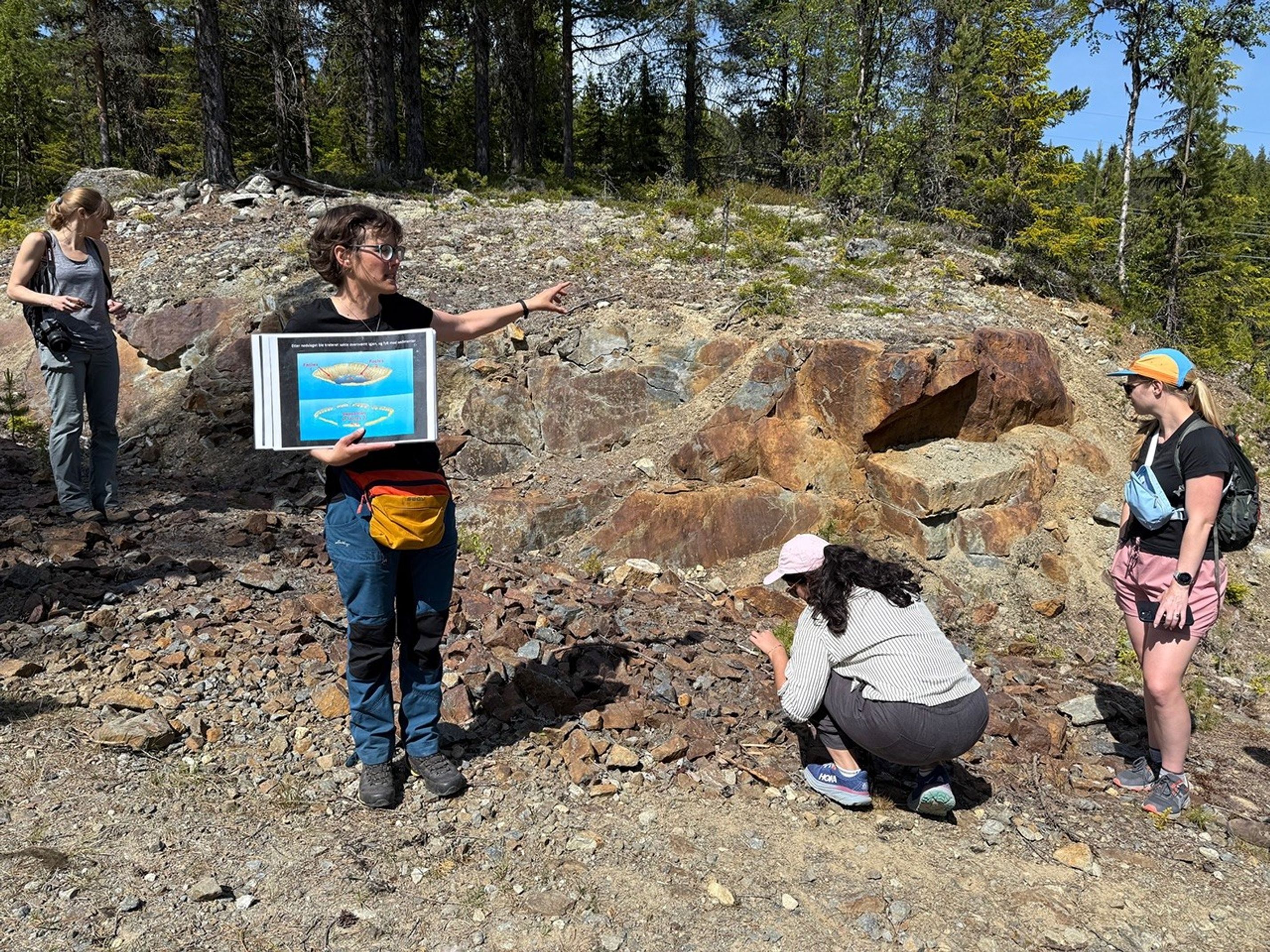Curiosity went into hibernation for a few weeks, executing only routine environmental and radiation monitoring activities, while the Sun was positioned between us and Mars (conjunction).

Curiosity went into hibernation for a few weeks, executing only routine environmental and radiation monitoring activities, while the Sun was positioned between us and Mars (conjunction). Today is our first day planning since Mars has emerged from behind the sun. Curiosity is healthy after her rest, and we wasted no time planning a multitude of science activities.
Prior to conjunction, Curiosity drove away from the Maria Gordon drill site to an area nearby that contained large (~6-7 cm across) resistant nodules (“Helmsdale Boulder Beds”). We deliberately drove over the nodules to crush them and expose their fresh interiors for examination by a number of the science instruments. The team is interested in determining the chemistry of the nodules relative to the flat bedrock. Why are they resistant? How does their composition compare to other nodules previously encountered, and what might this tell us about fluids that were present in these rocks? The workspace imaging that came down confirmed that we had successfully broken some of the nodules, such that we were able to make several observations just before conjunction. But we were not able to use the arm mounted APXS and MAHLI instruments; we did not want the arm left out over conjunction.
Today, we took advantage of pre-planning prior to conjunction to acquire APXS chemistry and MAHLI images on the crushed “Helmsdale Boulder Beds.” MAHLI will also image another fresh-looking nodule, “Goose Stone.” These observations will be complemented with ChemCam LIBS measurements and Mastcam images on the same crushed “Helmsdale Boulder Beds” target and the “Crovie” bedrock target. Looking further afield, Curiosity will image resistant, pediment-capping rock in the distance with ChemCam RMI and Mastcam. The pediment is a gently sloping surface that appears to cut across the underlying rocks that we are currently driving over. Mastcam will also image some grey float rocks that may be derived from those pediment-capping rocks.
We will also uplink several environmental observations including Mastcam images to detect changes in the unconsolidated sediment and wind activity while Curiosity has been parked in the same location for the last few weeks. Atmospheric observations are also planned to look for dust devils and to measure the opacity of the atmosphere.
Written by Lucy Thompson, Planetary Geologist at University of New Brunswick































